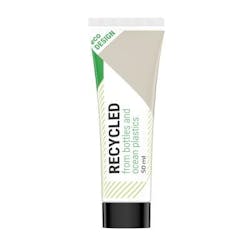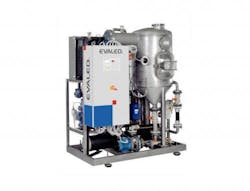Product Focus: Sustainability solutions
These days, it’s a given that manufacturing companies factor sustainability efforts into their daily operations. From managing water usage to reducing waste, there are a number of ways pharma companies can refine their processes to reduce their impact on the environment.
“Many pharma companies are quickly putting a greater focus on sustainability efforts,” says Tim Hanna, vice president, Business Development, PRAB Inc. “Most of these organizations are [also] trying to reduce operating costs as a first step by improving natural-resource management — predominately water, wastewater and energy.”
Of course, it takes the right technologies to put valuable sustainability practices into play. Here are some of the technologies vendors have innovated to drive these sustainability efforts throughout operations.
The plastic problem
Dealing with plastic consumption brought on by the rise of single-use technologies has become a major focus for the industry. According to Martina Christiansen, director of sales, Hoffmann Neopac AG, many of the pharma vendors leading the efforts to develop sustainable plastic solutions are finding inspiration from across the pond.
The caps for Neopac's RECYCLED tubes are made from 100 percent ocean plastics materials.
“The European Union is consistently ahead of U.S. standards in terms of mandating sustainability in packaging, so many eco-friendly solutions originate in Europe,” Christiansen says. “The EU has announced elevated targets for plastic packaging recyclability…These heightened goals challenge packaging manufacturers to utilize innovative materials and develop leaner production and supply chain practices.”
To that end, Neopac has launched its RECYCLED tubes, which contain a mixture of 50 percent recycled food-compliant plastics made out of PCR (post-consumer recycled) material from closed loop milk bottle recycling, and PIR (post-industrial recycled) material from laminate production waste. The tubes’ caps are also made from 100 percent ocean plastics materials, and are decorated using solvent-free colors and low-solvent varnishes.
Italy-based Bormioli Pharma also supplies drugmakers with pharma-compliant packaging manufactured with 100 percent recycled PET (rPET), as well as a wide range of bio-based, compostable and recycled plastic solutions for accessories, such as measuring cups, spoons or nutraceutical products. The company’s newest bottle made of 100 percent pharma-grade rPET offers the same performance of its virgin counterpart (PET), is transformable exactly like the virgin PET, and is highly customized according to customer needs.
“Plastic pollution is a hot topic in the public agenda, and growing waves of consumers are acting to reduce conventional plastics consumption worldwide,” Roberto Valenti, head of Materials Development at Bormioli, says. “This is a trend that the pharmaceutical industry cannot ignore forever.”
Water usage
Controlling water usage — one of the biggest resources used by pharma — has also become a prime concern for the industry.
“With such copious amounts of process water used and wastewater produced in the pharmaceutical industry, recycling can achieve a substantial reduction in pharma manufacturing operational costs,” Hanna says.
PRAB's EVALED has a low CO2 footprint and produces no air emissions.
According to PRAB, tight regulations on water discharge limits, high water usage and haul-away costs are prompting many companies to integrate water and/or wastewater treatment systems into their processes. The company says that one of the most successful methods to optimize these efforts when treating wastewater is using vacuum evaporation in conjunction with ultrafiltration, which is used to achieve zero liquid discharge (ZLD).
PRAB’s EVALED vacuum evaporator/crystallizer can help achieve ZLD by producing high-quality, reusable distillate. The system is also fully automated, recovers components such as proteins, metals and active ingredients, is low in energy consumption and produces no air emissions.
Improving compressed air
“Compressed air is considered a clean, safe and readily available source of energy for automation and as such, is commonly used in pharma production,” says Craig Correia, director of Life Science for Festo North America.
Despite the value of compressed air, Correia notes that there is a caveat.
“Considerable electricity is required to generate compressed air and this contributes to the environmental footprint and utility costs. Improving the monitoring of compressed air is a best practice that can immediately reduce plant costs and even predict potential issues,” he says.
According to Festo, the standard convention for monitoring compressed air has been limited to pressure sensors on the air preparation units, which only addresses part of the equation.
“Air flow rates and volumetric consumption, which have been widely ignored within the industry, are vital for understanding the total compressed air environment,” the company says.
Festo’s new component, the E2M module, provides air flow monitoring and measuring capabilities, and is compatible with a range of IoT solutions. The module measures both the real-time flow rate and the volumetric consumption, and then delivers data to the controller for analysis. Ultimately, the module provides new opportunities for efficiency, as well as enhanced energy and revenue savings.


